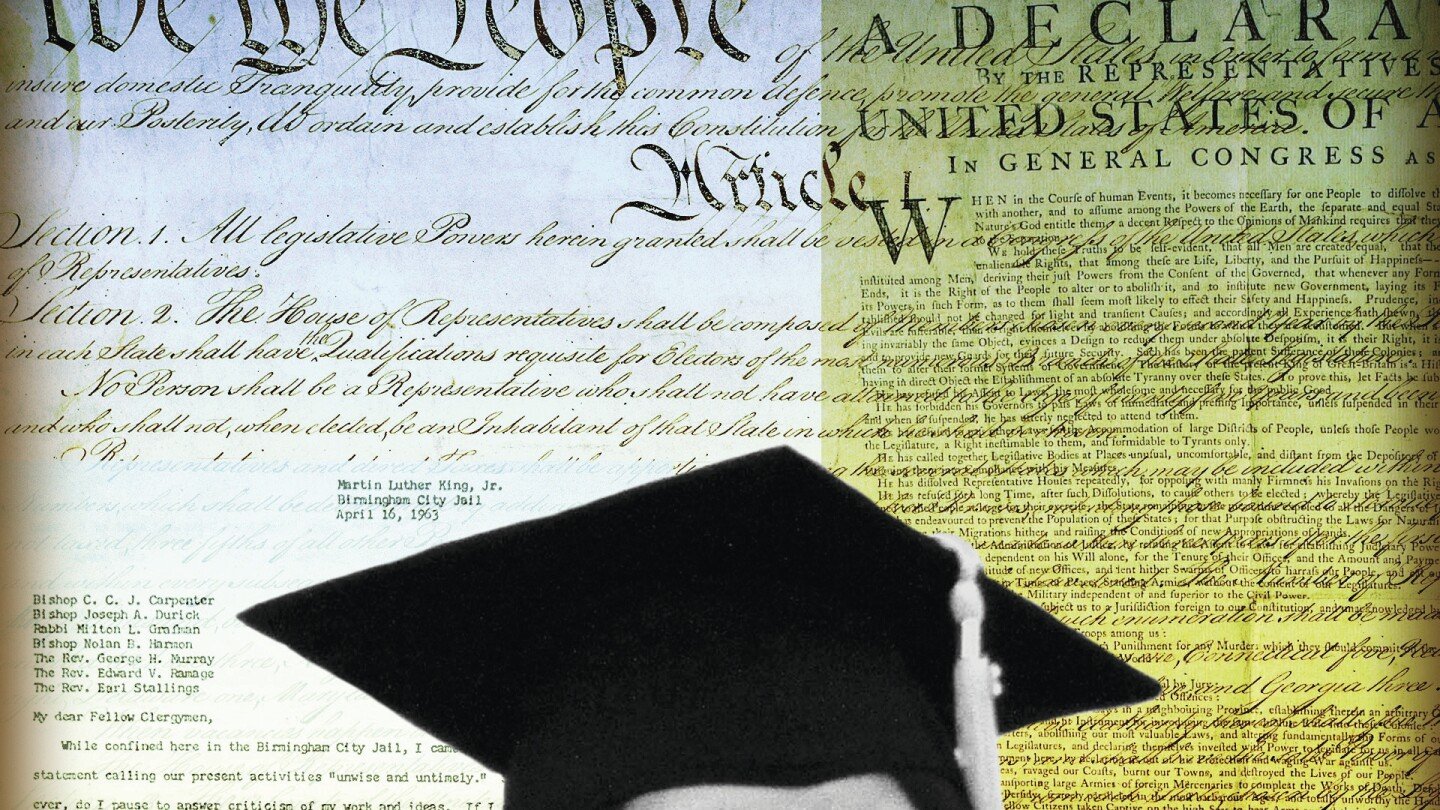On the first day of his American National Government class, Prof. Kevin Dopf asks how many of his students are United States citizens. Every hand shoots up.
“So, how did all you people become citizens?” he asks. “Did you pass a test?”
“No,” one young woman says tentatively. “We were born here.”
It’s a good thing. Based on his years of making his students at the University of South Carolina Beaufort take the test given to immigrants seeking U.S. citizenship, most would be rejected.
Most states require some sort of high school civics instruction. But with surveys showing that a third of American adults can’t name the three branches of the federal government, and one in which 10% of college graduates think Judith Sheindlin – TV’s “Judge Judy” – serves on the U.S. Supreme Court, many think we should be aiming higher.



6/10. Not bad for never having taken a US civics course.
Miffed I missed the Bill o’Rights one. As ever, need to slow down and read the question better.
Was it the one about how many amendments are in the bill of rights? I picked 20 since I know we have close to that (but apparently 11+ aren’t considered part of the BoR?).
The Bill of Rights (amendments 1-10) specifically addressed debate over ratification of the Constitution.
https://en.m.wikipedia.org/wiki/United_States_Bill_of_Rights
BoR are the first 10/27 amendments. They were all ratified in 1791. Federalists thought that the structural elements laid out in the main document would protect people’s rights but Antifederalists insisted on codifying specific rights and the BoR was a promise to get more people on board with the idea of the Constitution.